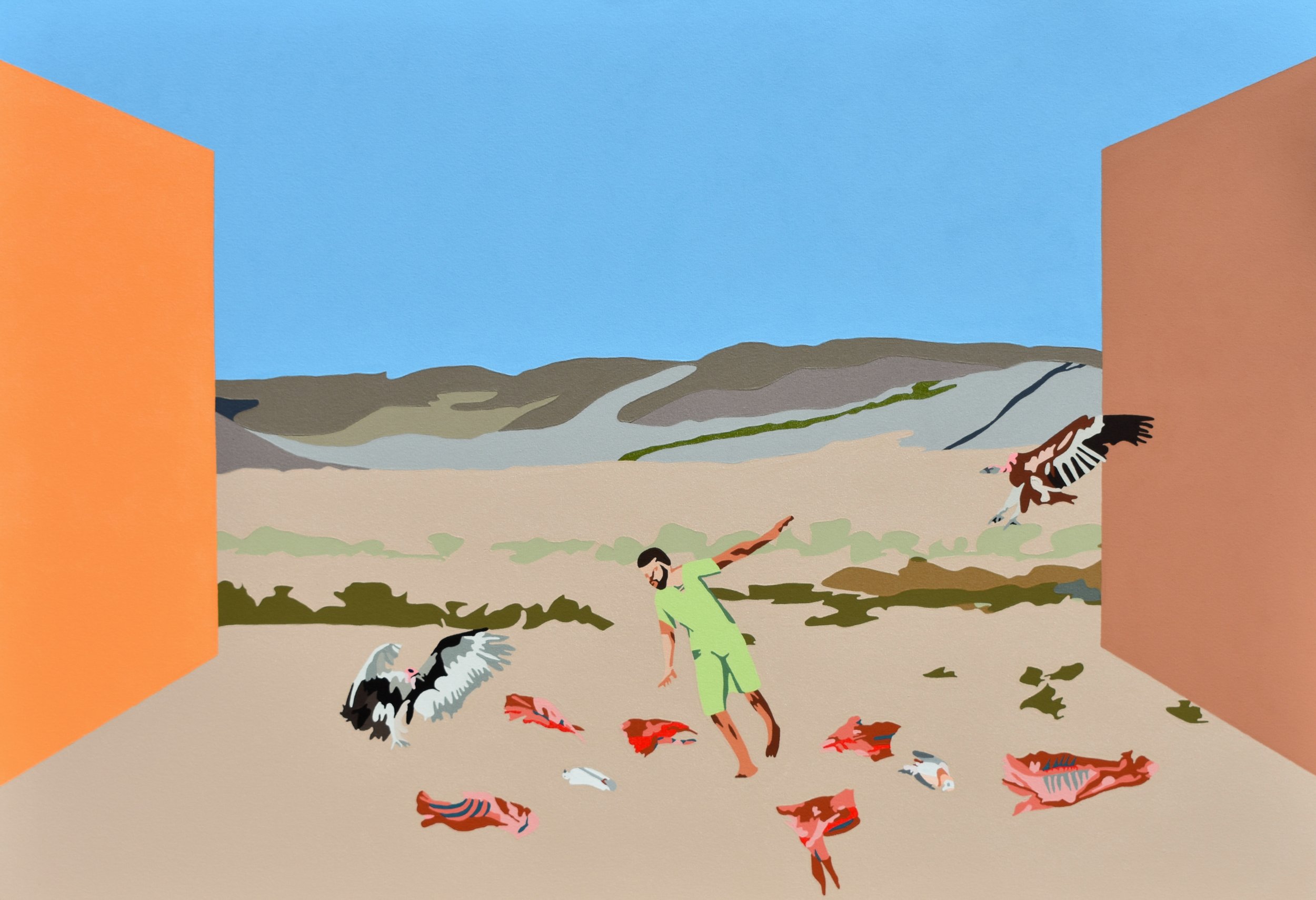When Art Eschews Theology
by Timothy deVries
As a painter, I’m greatly interested in the relationship between biblical art and Christianity. I’d describe myself as a biblical artist, insofar as the Bible has become a recurring theme in my work. Hans Rookmaaker, a Dutch scholar of art history and religion, is very careful to distinguish between art made by Christians and Christian art. He has developed, more than anyone else I’ve read, a strong argument for Christian liberty in the field of the arts. This doesn’t mean that art made by Christians can’t be distinguished from art that is made by non-Christians, just that it is held to the same standards of quality, purposiveness, and beauty. That seems right to me. I don’t mean to convey any special Christian messages in my art. In that sense, my art eschews theology, and I think that’s why it could be described as biblical art and not Christian art.
An Early Covenant, 2018, acrylic and house paint on canvas, 50 x 72 in.
Calvin Seerveld, a scholar in reformational aesthetics, says that allusivity is the character of art. An Early Covenant depicts the scene of God’s covenant with Abraham in Genesis 15. Abraham cuts the animals in half and walks between them to confirm that God’s promises are true. Genesis 15:11 reads, “when birds of prey came down on the carcasses, Abraham drove them away.”
Being and Nothingness, 2018, acrylic and house paint on canvas, 48 x 72 in.
Being and Nothingness references a portrait of Pope Innocent X by Diego Velazquez in 1650. I first learned about the painting from a copy that was made by Francis Bacon in 1953. In Bacon’s version, the Pope is in a cage, and he is screaming. I understand this painting to be a statement about what it means to take on ‘innocence’ as one’s title and defining characteristic. For example, it cost Jesus his life to say that he was the lamb and son of God. As the essence of Christian salvation consists of Jesus’ sacrifice for sin, these paintings make me wonder about the nature of substitutionary atonement.
Through the Waters, 2019, acrylic and house paint on canvas, 30 x 50 in.
In the Renaissance, many painters would represent biblical scenes with the clothing or architecture of the day, or by using relatives or strangers as models for biblical characters. To me, this indicates Scripture had something to say to the artist in the time and place in which the picture was painted. I’ve taken this approach in Through the Waters, a painting that places me and my family in the raging torrent of a river. The reference in this painting is to Isaiah 43. This passage was a great comfort to me and my family in a time of loss and grief.
Timothy deVries is a Canadian painter who works in the historical genre. Using a flat, bold painting style, Timothy has developed a unique visual language that is highly expressive.




